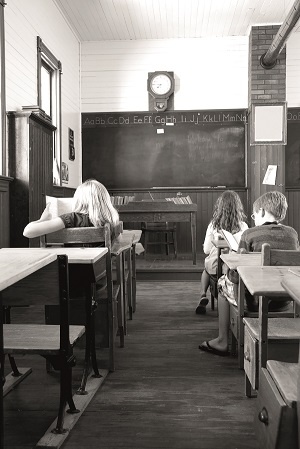Asbestos: Britain’s toxic schools
 Growing concerns over asbestos in UK schools led to the government launching an asbestos management assurance process last year to investigate the problem. Unfortunately, the process has hardly led to a feeling of assurance around the issue. In fact, out of almost 3,000 schools that were surveyed (and responded), well over 2,500 reported that asbestos was present in their school at some level. In addition, almost 700 schools were referred to the Health and Safety Executive (HSE) for not providing any evidence that they were appropriately managing asbestos within their school buildings.
Growing concerns over asbestos in UK schools led to the government launching an asbestos management assurance process last year to investigate the problem. Unfortunately, the process has hardly led to a feeling of assurance around the issue. In fact, out of almost 3,000 schools that were surveyed (and responded), well over 2,500 reported that asbestos was present in their school at some level. In addition, almost 700 schools were referred to the Health and Safety Executive (HSE) for not providing any evidence that they were appropriately managing asbestos within their school buildings.
The HSE continues to investigate the problem, and has issued advice on how to manage asbestos in schools, and the duty of care that falls on schools under the Control of Asbestos Regulations 2012. Many parents and students, however, are justifiably concerned about the levels of asbestos that could be present in their school buildings.
According to HSE estimates, around 5,000 deaths in the UK each year can be attributed to cancers caused by asbestos exposure. Deaths are due to mesothelioma, a type of cancer caused almost exclusively by inhaling asbestos fibres, and other asbestos-related lung cancers. The National Education Union (NEU) claims that over 200 teachers have died from mesothelioma since 2001, with actual figures probably much higher, given that records only include those who have died before the age of 75. A 2018 study suggests that there are around five times more deaths from mesothelioma among teachers than in other populations not exposed to asbestos dangers.
What is even more worrying is that children appear to be more vulnerable to the effects of asbestos than adults. Relatively few numbers of children and young adults are diagnosed with mesothelioma, but this is due to the fact that the disease typically develops at least 20 years after exposure occurs. Research indicates, however, that children exposed to asbestos are actually five times more likely to contract the disease later in life than adults exposed to the same levels.
The problem is further complicated by the very nature of asbestos. It is a substance that degrades over time, becoming more dangerous as it does so. It was banned in the UK in 1999, meaning that where it is present in existing buildings, it is at least 20 years old. Given that 60% of UK schools are housed in buildings over 40 years old, it is likely that asbestos in most schools is even older. This means that it could be deteriorating and posing more of a danger in many schools.
However, removing asbestos is problematic. While this seems like the obvious solution, disturbing and removing asbestos can increase risks of airborne particles, so a thorough risk assessment is necessary, and in some cases it may be better to apply engineering controls, such as enclosing and ‘sealing off’ asbestos, so that particles cannot enter the air at all.
Putting a unified asbestos management plan in place for UK schools is made even more challenging by the fact that over 60% of schools are outside the direct control of local education authorities, including academies and free schools. It is also expensive, though many would argue, not prohibitively so.
In a 2018 BBC interview, a representative of the NEU is quoted as saying:
“They’re paying £7bn to renovate the House of Commons, another £150m to renovate the Royal Palaces. It would take £13bn to get schools up to a satisfactory standard without removing asbestos.”
He goes on to suggest that it would cost more to “do it properly”, but either way, it is clear that funding for this issue is needed to protect children and education staff across the country.
